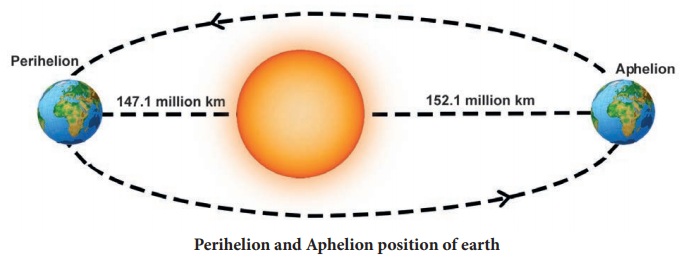Measurement | Term 1 Unit 1 | 7th Science - Measuring distance of celestial bodies | 7th Science : Term 1 Unit 1 : Measurement
Chapter: 7th Science : Term 1 Unit 1 : Measurement
Measuring distance of celestial bodies
Measuring distance of celestial bodies
Normally,
we use centimeter, metre and kilo metre to express the distances that we
measure in our day to day life. But, for space research, astronomers need to
measure very long distances
such as the distance between the earth and a star or the distance between two
stars. To express these distances, we shall learn about two such units, namely,
i.
Astronomical unit
ii.
Light year
Water has more density
thanoils like cooking oil and castoroil, although these oils appear to be denser
than water. Density of castor oil is 961 kg/m3. If we put one drop
of water in oil, water drop sinks. But, if we put one drop of oil in water, oil
floats and forms a layer on water surface. However, some oils are denser than
water.
Astronomical unit
We all know that the earth revolves
around the sun in an elliptical orbit. Hence, the distance between the sun and
the earth varies every day. When the earth is in its perihelion position
(Perihelion is position of the shortest distance between the earth and the
sun), the distance between the earth and the sun is about 147.1 million
kilometre. When the earth is in its farthest position, that is when the
distance between Earth and Sun is the largest (called aphelion position) the
distance is
152.1 million kilometer. The average distance between the earth and the sun is
about 149.6 million kilometer. This average distance is taken as one
astronomical unit.
Neptune is 30 AU away from the Sun.
It means it is thirty times farther than the Earth.
One
astronomical unit is defined as the average distance between the earth and the
sun.
1
AU = 149.6 million km = 149.6 × 106 km = 1.496 × 1011 m.
Light year
The
nearest star to our solar system is Proxima Centauri. It is at a distance of
2,68,770 AU. We can clearly see that using the AU for measuring distances of
stars would be unwieldy. Therefore, astronomers use a special unit, called
‘light year’, for measuring the distance in deep space. We have learnt that the
speed of light in vacuum is 3 × 108 m/s. This means that light
travels a distance of 3 × 108 m in one second. In a year (non-leap),
there are 365 days. Each day has 24 hours; Each hour has 60 minutes; Each
minute has 60 seconds.
Thus,
the total number of seconds in one year = 365 × 24 × 60 × 60
= 3.153 × 107 second

If light travels a distance of 3 ×
108 m in one second, then the distance travelled by light in one
year = 3 × 108 × 3.153 × 107 = 9.46 × 1015 m.
This distance is known as one light year.
One light year is defined as the
distance travelled by light in vacuum during the period of one year.
1 Light year = 9.46 × 1015
m.
In terms of light year, Proxima
Centauri is at 4.22 light-years from Earth and the Solar System (and Earth).
The Earth is located about 25,000 light-years away from the galactic center.
Related Topics